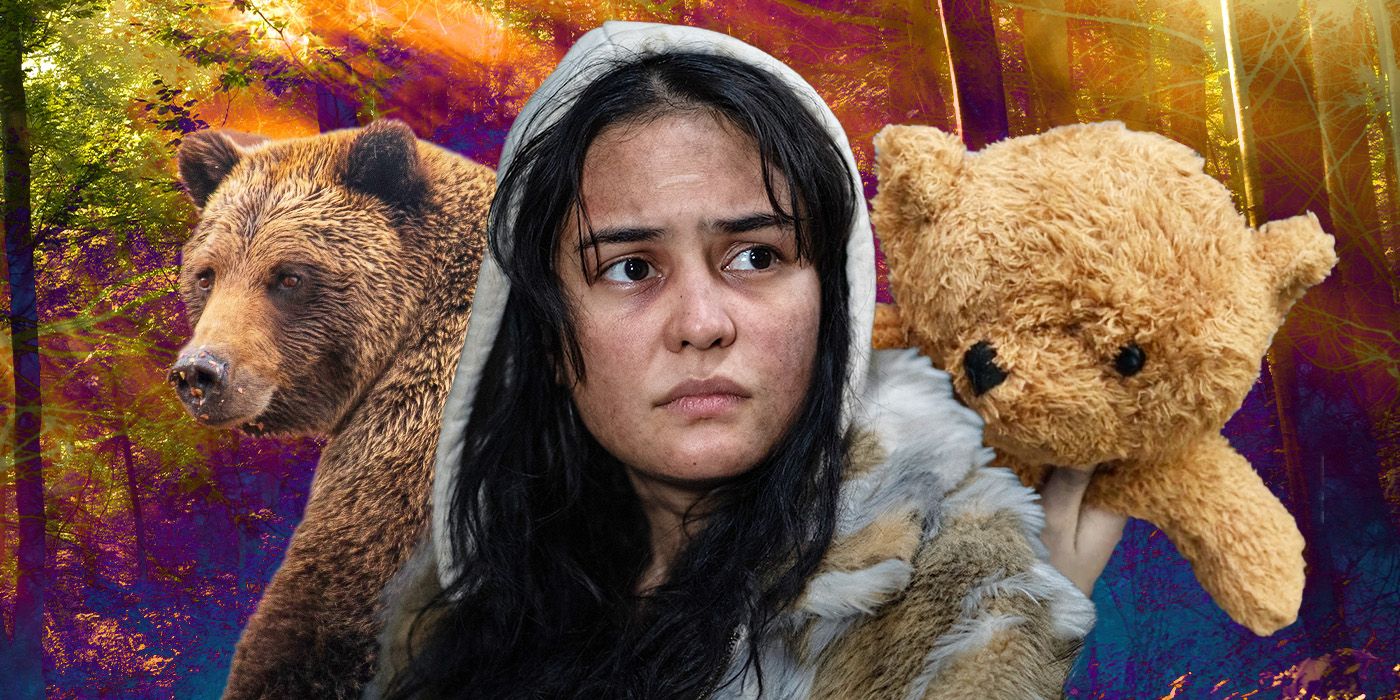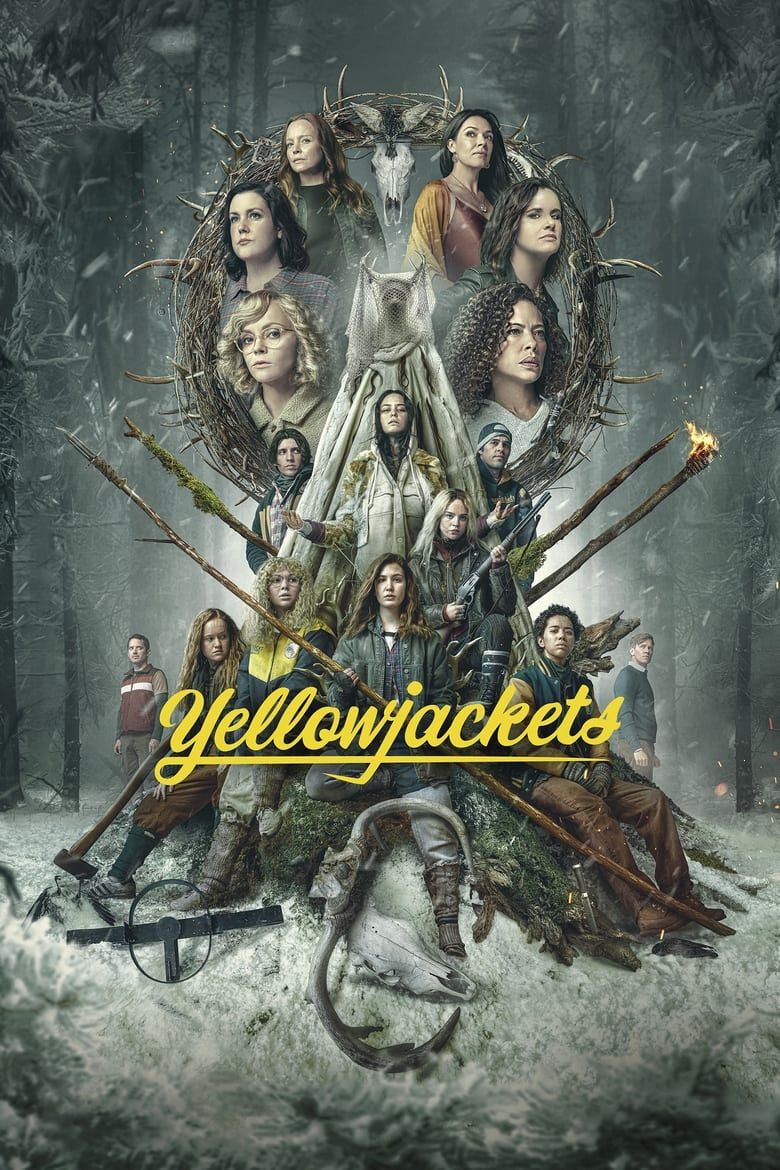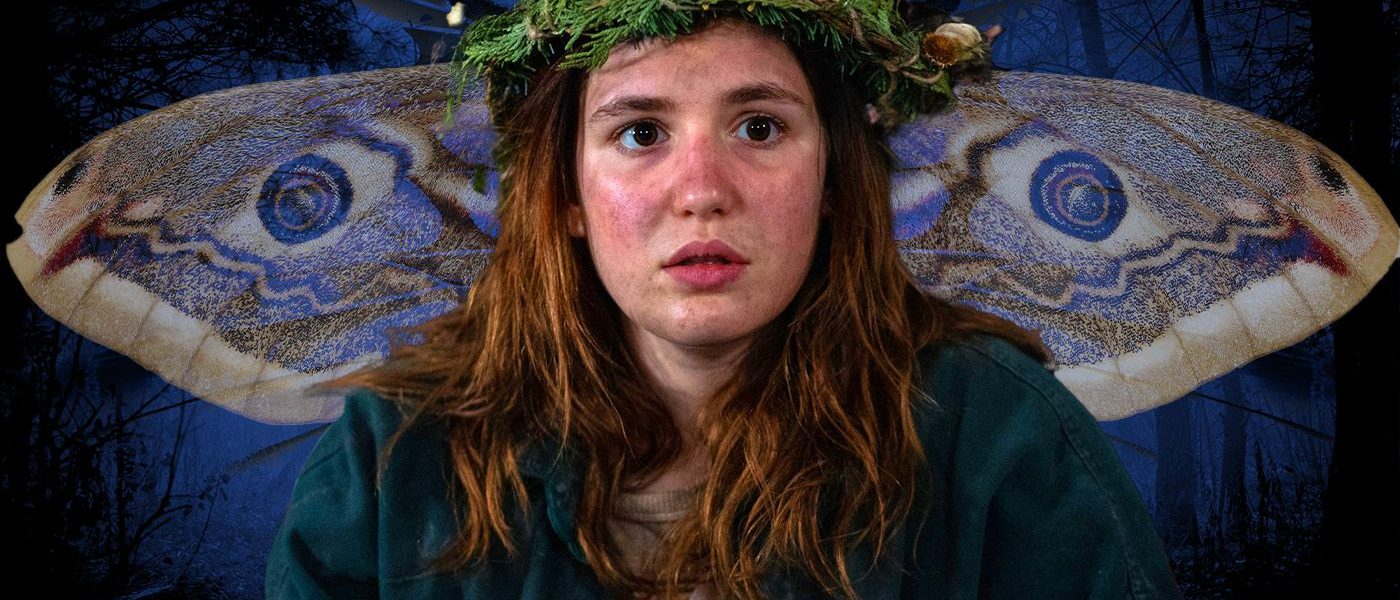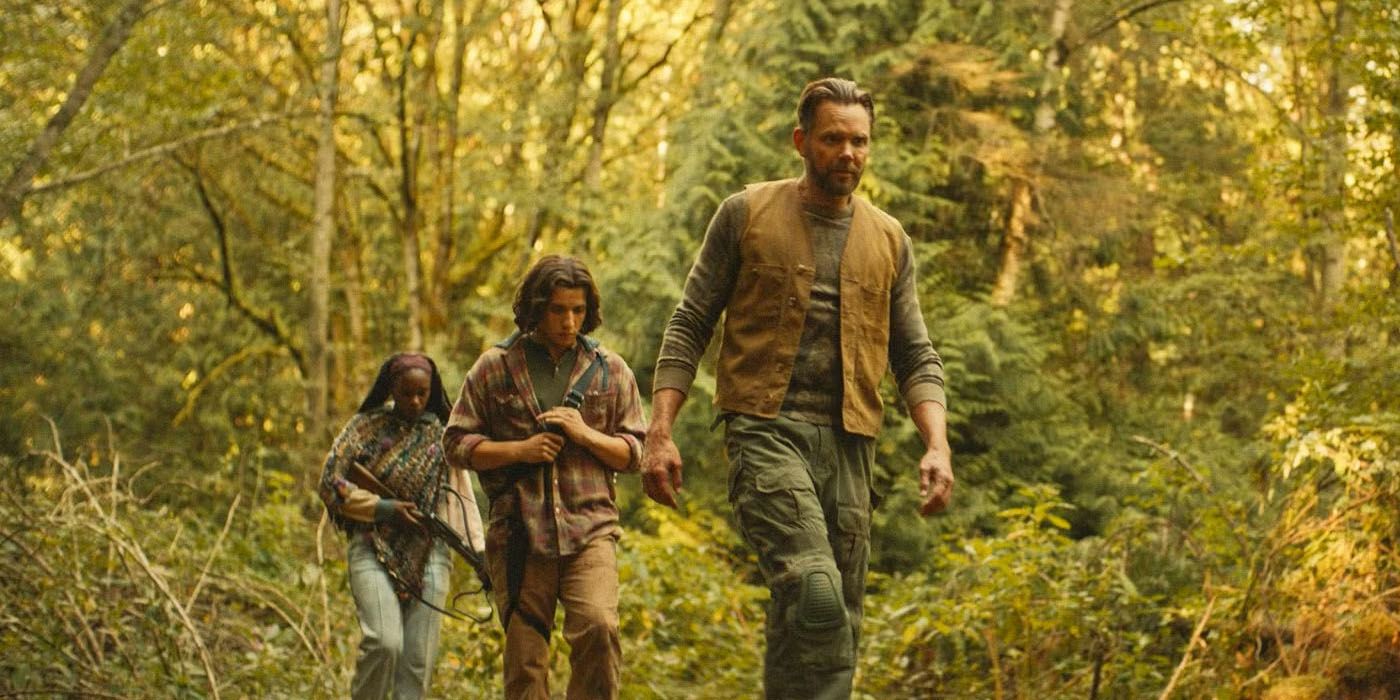Editor’s Note: Spoilers ahead for Yellowjackets, Season 3
Yellowjackets showcases a rich tapestry of animal imagery throughout its gripping narrative, with the recurring presence of bees evolving into a broader symbolism that now includes bears, birds, and even frogs. As we near the conclusion of Season 3, the penultimate episode titled “A Normal, Boring Life” introduces yet another layer of symbolic fauna—moths. In a poignant dream sequence, Shauna (Melanie Lynskey) envisions a mundane existence as a teenager working in a grocery store, where she encounters the ghostly figure of Jackie (Ella Purnell).
This dream is laden with meaning—Jackie appears older, adorned in the colors she once envisioned for a shared dorm with Shauna, highlighting the stark contrast between Shauna’s current life and her once-cherished aspirations of attending college, immersing herself in literature, and pursuing a brighter future. In this unsettling vision, Shauna finds herself ringing up hot chocolate, a poignant reminder of Jackie’s favorite drink, while the packaged meat grotesquely transforms into human flesh, echoing the show’s themes of cannibalism. Above them, flickering fluorescent lights become infested with moths, further deepening the dream’s haunting atmosphere.
The Death’s-head Hawkmoth: Unpacking Its Profound Symbolism
Shauna awakens from this unsettling dream, parked near the home of Melissa (Hilary Swank), who is living under a secret identity in adulthood. Within the teenage timeline, as Melissa (Jenna Burgess) eagerly discusses her future aspirations once they return home, Shauna (Sophie Nélisse) is captivated by a massive moth hovering above Melissa’s head. This moth, however, is not just any ordinary insect; it is the ominous Death’s-head hawkmoth.
The Death’s-head hawkmoth has become emblematic in popular culture, famously associated with the notorious fictional serial killer, Buffalo Bill, from Silence of the Lambs. Historically, this moth has been recognized as a symbol of death dating back to as early as 1875, and it has appeared in the writings of esteemed authors like Edgar Allan Poe in his tale, The Sphinx. The scientific name of this species invokes deep mythological and morbid connotations. The genus Acherontia is derived from Acheron, one of the rivers that encircle the Greek Underworld, known for being the River of Woe. Notably, one subspecies of this moth, Acherontia Styx, directly references the River Styx, which serves as the threshold between the living and the dead.
Furthermore, Acherontia Lachesis and Acherontia Atropos draw their names from the Moirai of Ancient Greek mythology, known as The Fates. These three sisters govern the lifecycle: Clotho spins the thread of life, Lachesis determines its length, and Atropos ultimately severs it. Atropos is most directly linked to the concept of death. In the narrative of Yellowjackets, the introduction of this moth coincides with a moment of trinity; Lottie (Courtney Eaton), Shauna, and Tai (Jasmin Savoy Brown) all express a shared sentiment that departing from the wilderness would signify a grave mistake, shortly after Shauna’s vision of the moth and her current daydream about them.

Related
All of That Eerie ‘Yellowjackets’ Bear Symbolism Is Finally Starting To Make Sense
Could Kodi be the key?
However, the Moirai are not the only layer of symbolism associated with these moths, which is particularly fitting for a show that has consistently woven mythological references into its narrative. Interestingly, these moths can often be found raiding beehives. All three species of the Death’s-head moth have been noted to infiltrate beehives by mimicking the scent of the bees, which allows them to feast on the honey undetected. It is speculated that the chirping sounds these moths produce may imitate the sound vibrations of a Queen bee, enabling them to approach the hive without alarming the bees. While these moths do not directly attack the bees, their presence can lead to casualties and even the collapse of a hive.
The Symbolic Representation of the Moth in ‘Yellowjackets’: A Deep Dive
Diving deeper into the symbolism of the Death’s-head moth, we encounter the idiom, “Like a moth to a flame,” which signifies an individual irresistibly drawn towards something perilous, often with an inability to resist. This phrase has roots in literature, notably appearing in Shakespeare’s The Merchant of Venice, where it refers to Arragon’s relentless pursuit of Portia, despite the absence of genuine affection. The moth’s appearance in both Shauna and Melissa’s shared space and in Jackie’s guilt-filled dream outside Melissa’s house could suggest a connection to Shauna’s entanglement with unresolved elements from her past, particularly involving Melissa.
Yet, Yellowjackets rarely presents its mythological references without a deliberate purpose. While the narrative certainly plays with the toxic and complex nature of Shauna and Melissa’s relationship, the looming threat represented by the moths is unmistakably Kodi (Joel McHale). Kodi’s contempt for the group of wilderness survivors is overtly displayed, and Edwin (Nelson Franklin), the frog researcher previously eliminated by Lottie, noted that Kodi’s clothing doesn’t belong to him, revealing the label “Erik Cheung” inside his jacket. Just before Edwin uncovers this unsettling detail, Kodi utters the phrase “the wilderness provides,” a mantra typically associated with Lottie, as he prepares a wild rabbit for consumption. Edwin frequently expresses his concerns that Kodi is leading the group astray, possibly sabotaging their chances of rescue. It raises the possibility that Kodi either lacked knowledge of the rescue point or intentionally misled them. Perhaps the moths serve as an ominous warning against following him, or Kodi could simply be a clever distraction.
With Kodi now deceased, having been fatally stabbed by Hannah (as Hannah and Melissa assume more significant roles in their respective timelines), they now embody the most likely representation of the moth. Both past and present Shauna seem to be chasing after Melissa, potentially orchestrated by Melissa in the current timeline. Melissa manipulates the narrative by using flame in her fireplace to create smoke, mirroring the metaphor of a disturbed beehive. In Episode 9, titled “How The Story Ends,” her evolving relationship with Hannah becomes more apparent. Shauna clutches a lock of Hannah’s hair from their initial pursuit of her. In this episode, Shauna finds herself twirling that lock of hair in her makeshift bed. Hannah serves as both a foil and parallel to Shauna; she is a young mother with a living child she relinquished for adoption, allowing her to pursue her dreams. She represents what Shauna might have become if the plane crash had never occurred. Hannah’s choice to lie and accuse Kodi of stealing the knife before ultimately killing him reflects Shauna’s survival instincts and willingness to resort to violence. It is possible that Hannah embodies the moth disguised as a bee.
A rift has already formed among the remaining teens, paving the way for official factions to arise. Hannah seems poised to lead one of these factions, potentially revealing to Shauna and her followers that Mari and Natalie not only provided her with the knife but also conspired to escape with Kodi, leaving them behind. This revelation could inspire loyalty, but even without it, it establishes Hannah’s control over the group. Furthermore, the long strands of brunette hair pinned to the Antler Queen likely belong to Hannah, given their matching color, length, and texture. Shauna’s action of twirling her hair now could symbolize her overcoming Hannah and honoring her memory by keeping the hair as a royal adornment. While this notion may seem strange, it pales in comparison to the act of consuming a deceased best friend’s ear as a tribute of grief and love.
Hannah’s rise as a potential clan leader and queen echoes the fable Kodi shares with Edwin and Hannah while in the tent, where frogs beseech their god for a new king, only to be devoured by the heron who answers their call. Hannah’s dominance over the frogs is palpable.
The Enigmatic Connection of Shauna and Her Moths
While Lottie’s visions oscillate between tangible symptoms of schizophrenia and more nebulous phenomena such as her interactions with birds, bears, and episodes of fluent French, and Tai grapples with her own childhood visions of death and the presence of Other Tai, Shauna seems uniquely tied to the moths, and they alone. This marks the first instance where Shauna appears to be receptive to some form of guidance from the wilderness. Although she asserts to Lottie, “I’m not staying because of you… or it,” it is evident that both her past and present selves are profoundly unsettled by the moths’ appearance. Shauna possesses, at the very least, a primal instinct for self-preservation that manifests even in her inappropriate behavior in civilized settings. This instinct resonates with the central argument she and Lottie had in the Season 2 finale, where Shauna questions, “You know there’s no ‘it,’ right? It was just us.” Lottie counters, “Is there a difference?”
As Melissa and Van acknowledge the persistent ambiguity surrounding the wilderness in “How The Story Ends,” the moths themselves could represent either a sign from the wilderness or merely a coincidental manifestation at a pivotal moment. Perhaps the moths are a phenomenon exclusive to Shauna’s perception. For now, this remains another intriguing piece of the overarching puzzle, as delightfully ambiguous as every other piece that has come before it. Whether this mystery will be unraveled or remain an enduring question, it unquestionably constitutes one of the most significant facets of Shauna’s narrative to date.

Yellowjackets
- Release Date
-
November 14, 2021
- Network
-
Showtime, Paramount+ with Showtime









